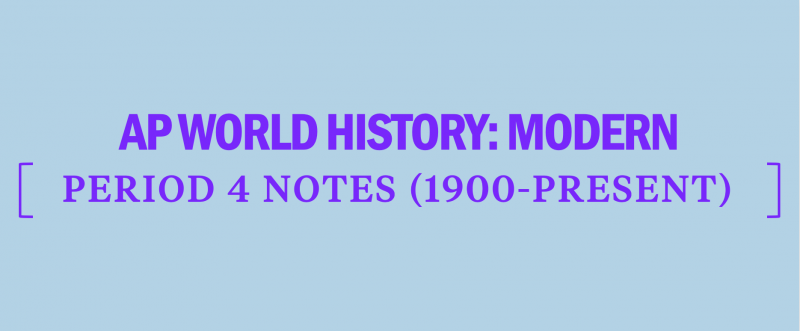AP World History: Sample DBQ Thesis Statements
Let’s take a look at a sample AP World History DBQ question and techniques to construct a solid thesis.
Crafting a Solid Thesis Statement
You have one chance to make a good first impression. Usually, an AP World History reader can tell within the first few sentences whether or not an essay is going to be strong. A few essays can recover after a poor start, but first impressions matter. Consequently, nothing is more important in the first paragraph than the clear statement of an analytical thesis.
Different kinds of writings demand different types of opening paragraphs. In English class, you may learn a style of essay writing that asks for general background information in a first paragraph. On a DBQ, however, you do not have much time. The reader is most interested in seeing a strong thesis as soon as possible.
Your thesis can be more than just one sentence. With the compound questions often asked by the DBQ, two sentences might be needed to complete the idea. To score well, the thesis needs to include specific information that responds to the question. Many students think they have written a thesis when, in actuality, they have not; their opening paragraphs are just too general and unspecific.
The thesis is that part of your essay that 1) specifically addresses the terms of the question and 2) sets up the structure for the rest of your essay. Let’s take a look at thesis statement samples based on the prompt listed above.
“For the period 1876–1908, analyze how the Ottoman government viewed ethnic and religious groups within its empire.”
Thesis Statements that Do NOT Work
The following statement is not an acceptable thesis; it is far too vague. It says very little about how the essay is structured.
There were many ways in which the Ottoman government viewed ethnic and religious groups.
The next statement paraphrases the historical background and does not address the question. It would not receive credit for being a thesis.
The Ottoman government brought reforms in the Constitution of 1876. The empire had a number of different groups of people living in it, including Christians and Muslims who did not practice the official form of Islam. By 1908 a new government was created by the Young Turks and the sultan was soon out of his job.
This next sentence gets the question backward: you are being asked for the government’s view of religious and ethnic groups, not the groups’ view of the government. Though the point-of-view issue is very important, this statement would not receive POV credit.
People of different nationalities reacted differently to the Ottoman government depending on their religion.
The following paragraph says a great deal about history, but it does not address the substance of the question. It would not receive credit because of its irrelevancy.
Throughout history, people around the world have struggled with the issue of political power and freedom. From the harbor of Boston during the first stages of the American Revolution to the plantations of Haiti during the struggle to end slavery, people have battled for power. Even in places like China with the Boxer Rebellion, people were responding against the issue of Westernization. Imperialism made the demand for change even more important, as European powers circled the globe and stretched their influences to the far reaches of the known world. In the Ottoman Empire too, people demanded change.
Thesis Statements that DO Work
Now we turn to thesis statements that do work. These two sentences address both the religious and ethnic aspects of the question. They describe how these groups were viewed.
The Ottoman government took the same position on religious diversity as it did on ethnic diversity. Minorities were servants of the Ottoman Turks, and religious diversity was allowed as long as Islam remained supreme.
This statement answers the question in a different way but is equally successful.
Government officials in the Ottoman Empire sent out the message that all people in the empire were equal regardless of religion or ethnicity, yet the reality was that the Turks and their version of Islam were superior.
Going Beyond the Basic Requirements
Your goal for the DBQ is to earn the highest score possible. To earn a stellar score, several indicators of excellence may be considered. A high-scoring essay will likely:
- have a highly sophisticated thesis
- show deep analysis of the documents
- use documents persuasively in broad conceptual ways
- analyze point of view thoughtfully and consistently
- identify multiple additional documents with sophisticated explanations of their usefulness
- bring in relevant outside information beyond the historical background provided
Do:
- Take notes in the margins during the reading period relating to the background of the speaker and his/her possible point of view.
- Assume that each document provides only a snapshot of the topic—just one perspective.
- Look for connections between documents for grouping.
- In the documents booklet, mark off documents that you use so that you do not forget to mention them.
- As you are writing, refer to the authorship of the documents, not just the document numbers.
- Mention additional documents and the reasons why they would help further analyze the question.
- Mark off each part of the instructions for the essay as you accomplish them.
- Use visual and graphic information in documents that are not text-based.
Don’t
- Repeat information from the historical background in your essay.
- Assume that the documents are universally valid rather than presenting a single perspective.
- Spend too much time on the DBQ rather than moving on to the other essay.
- Write the first paragraph before you have a clear idea of what your thesis will be.
- Ignore part of the question.
- Structure the essay with just one paragraph.
- Underline or highlight the thesis. (This may be done as an exercise for class, but it looks juvenile on the exam.)
Read on for tips on how to incorporate the documents into your AP World History DBQ essay.









